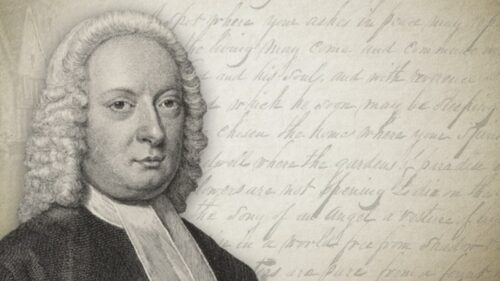-
9 The Earthly And Temporary Covenants: The Error Of A Conditional Covenant Of Grace With Its Duty-Faith And Free-Offer Perversions
I’d like to welcome you back for another study in the Word of God. We come again to the subject of the earthly and temporary covenants. And if you remember, I believe these covenants can be arranged under one of two categories. First, there are two spiritual and perpetual covenants—this would be that of Redemption and that of Works. And then secondly, there are four earthly and temporary covenants—that which God made with Noah, with Abraham, with Moses and with David. As for the New Covenant, I don't believe this is an actual covenant, but rather, it's an explanation for the Covenant of Redemption to the Jewish people as a nation as they were then under the Mosaic economy and subject to its laws.
-
The Dangers Of Associations And Mission Boards
“Foreign Missions.” A tract bearing [this] title, and dated "Chatteris Committee, Oct. 6, 1840, “has been forwarded to us, by a correspondent, for an opinion of it in our pages. It is not indeed our usual practice to travel out of our road to pronounce a judgment on works not sent to us expressly for review, but we feel ourselves justified in this particular instance in departing from our accustomed rule. Our wide circulation amongst the living family, and, we trust we may add, our influence amongst them, have put us into a position which we did not occupy at the outset. If the Lord has set us upon a watch tower, if He has given us all any measure of spiritual discernment, or endowed…
-
2 Examples Of The Gospel Law
I’d like to welcome you back for another study in the Word of God. In our previous study, I tried to answer the question—What Is The Gospel Law? In a nutshell, I believe the gospel law is a living union—the living union of the soul with the Lord Jesus Christ. Now, at the close of last week's study, I mentioned that I wanted to share with you some examples of the gospel law from the Bible, but I realized after I finish last week's teaching, that I failed to tie together two loose ends. So, before we look at some examples, I’d like to review with you the diagram that I presented to you last time. I call it the Framework of Sovereign Grace. And…
-
1 What Is The Gospel Law?
I’d like to invite you to take your Bible. We're looking at Galatians chapter 6 and I'll be reading for you the second verse. While you're turning there, let me make a comment about the unpolished onscreen notes. If you follow my teaching ministry regularly, you'll know that I have more polished notes than the ones you see on the screen. This week and probably the next three to four weeks after, I’m going to be extremely busy and I just don't have the time to make the regular preparations I usually give to these recorded teachings, and so I've opted to continue using onscreen notes, but I'm afraid you're going to have to put up with my handwritten notes, and I'll be making them…
-
The Articles Of Faith, Biddenden Chapel
With the combined energies and resources of a deacon belonging to Tilden Chapel in Smarden, and a farmer residing in Lashenden, a Strict and Particular Baptist Chapel was built in 1880. Two years after the chapel opened, a church was organized and John Kemp was appointed the first pastor. He served the fellowship until his death in 1932, a total of 52 years. Biddenden Chapel, 1880 John Kemp, Pastor
-
Gadsby’s Convictional Statement Of Faith
William Gadsby (1773-1844) was a Strict and Particular Baptist preacher, who for thirty-eight years served as pastor for the church meeting at Black Lane, Manchester. His son John (1808-1893) was an author and printer, who in 1835 started a new religious magazine entitled, “The Gospel Standard, Or, Feeble Christian’s Support.” He immediately gained the help of his father, together serving as its first Editors. The first Issue of the magazine was printed in August 1835, beginning with an “Address” to the “Christian Reader”, the content of which sets forth the articles of faith drawn up and embraced by the Editors (most likely the convictional statement of William Gadsby):









